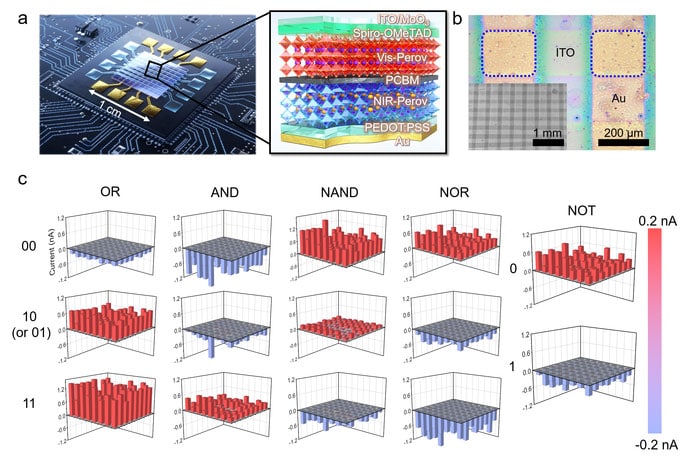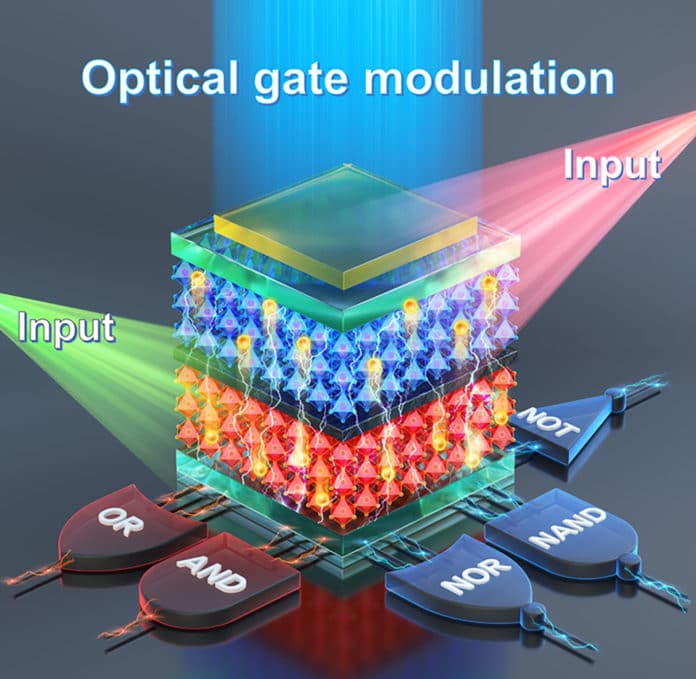Scientists- from the Korea Institute of Science and Technology and Gwangju Institute of Science and Technology- have announced that they have developed ultra-high-speed, high-efficiency optoelectronic logic gates (OELGs) using organic-inorganic perovskite photodiodes.
In recent years, Optoelectronic logic gates (OELGs) have been receiving significant attention. They act as a crucial building block of future integrated circuits for accurate and fast data processing.
All-optical logic gates use light inputs, which demonstrates low energy loss physically and can operate only with light energy without an electrical power supply. They offer benefits such as good optical gain, saturation output power, and gain bandwidth.
In this study, scientists implemented a stacked perovskite optoelectronic logic gate. They vertically stacked two layers of perovskite thin films like a sandwich. They proved that the desired binary logic operation is possible by inputting two lights of different wavelengths and intensities.

As the photocurrent polarity of the perovskite optoelectronic logic gate may be arbitrarily changed using light, several logic gate operations can be performed for the same input value. As a result, unlike the existing logic gate, which can only execute one logical operation on a single device, the newly designed one can conduct all five basic logic operations, including AND, OR, NAND, NOR, and NOT.
It allows for the creation of optical processors with excellent spatial efficiency and integration, as one logic gate can perform the functions of five logic gates.
Dr. Yusin Pak at the Sensor System Research Center (KIST) said, “Perovskite optoelectronic logic gates that execute multiple logic operations in response to optical input are expected to be used for ultra-small and low-power universal optical sensor platforms in the future.”
Professor Gun Young Jung at the School of Materials Science and Engineering (GIST) said, “The optoelectronic logic gate developed through this research is an outcome of optical computing R&D that realizes five basic logic operations into one device, and will greatly contribute to next-generation optical communication, optical network, and healthcare R&D.”
Journal Reference:
- Kim, W., Kim, H., Yoo, T.J. et al. Perovskite multifunctional logic gates via bipolar photoresponse of single photodetector. Nat Commun 13, 720 (2022). DOI: 10.1038/s41467-022-28374-w
